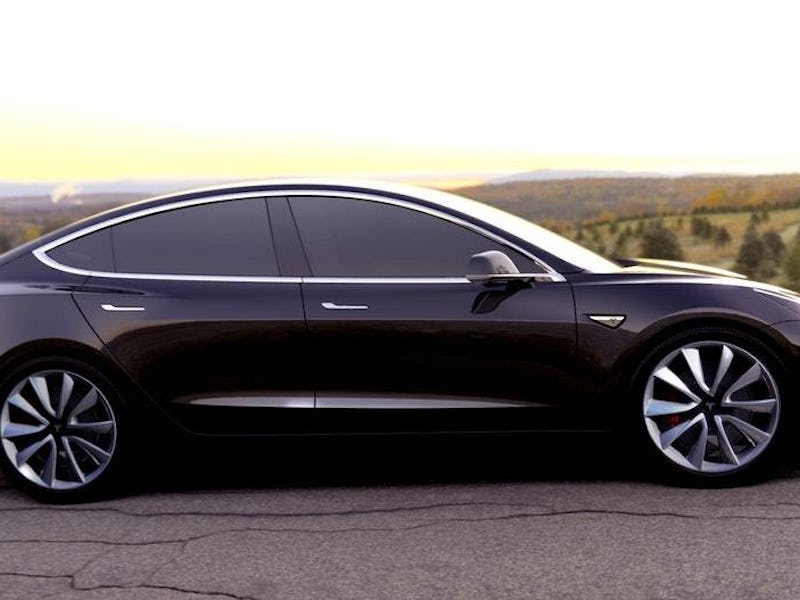Historically, Elon Musk isn’t great with deadlines — but so far, his official stance has been that the Tesla Model 3 is right on time. Still, Tesla has a monumental task ahead of itself if it wants to produce the Model 3 on a mass scale, and the company is being pretty transparent about the challenges it faces ahead. In the company’s annual financial report released Wednesday, Tesla claimed that production and delivery of the $35,000 vehicle are expected to start in the second half of the year, but that timescale is based on six key assumptions. If Tesla fails on these points, it could push back the launch further than expected. Here are the six assumptions the company has identified that could ruin the Model 3’s release schedule:
• that we will be able to build and equip a new dedicated final assembly line for high volume production of Model 3 at the Tesla Factory without exceeding our projected costs and on our projected timeline;
By September, the Fremont facility is expected to start producing 5,000 Model 3 cars per week, eventually doubling that. This is a major increase from the 50,000 Model S or X cars produced each year at the factory.
• that we will be able to continue to expand Gigafactory 1 in a timely manner to produce high volumes of quality lithium-ion cells and integrate such cells into finished battery packs for Model 3, all at costs that allow us to sell Model 3 at our target gross margins;
Gigafactory 1 started producing cells in its finished areas at the start of this year, but Tesla is pouring money into finishing the rest of the factory. Last month, the total construction contracts exceeded $1 billion.
• that the equipment and processes which we install for Model 3 production will be able to accurately manufacture high volumes of Model 3 vehicles within specified design tolerances and with high quality;
Tesla has designed the Model 3 with this point in mind. In the company’s most recent earnings call, Musk said that the car was “really designed for manufacturing” because it lacked a lot of the “bells and whistles” found in older models. For example, the Model 3 contains half the wiring of the Model S.
• that we will be able to continue to engage suppliers for the necessary components on terms and conditions that are acceptable to us and that we will be able to obtain components on a timely basis and in the necessary quantities to support high volume production;
This point is particularly tricky. Musk said himself in May 2016 that he set an “impossible deadline” to start production on July 1 in order to push suppliers harder. A delay of a few months is possible, but surprisingly, the company claimed last month that it was “on track” to meet this deadline.
• that we will be able to complete our final tooling, production planning and validation for Model 3 and the delivery of final component designs to our suppliers in a timely manner;
Prototype versions of the Model 3 have been spotted making the rounds at the Gigafactory, but it remains to be seen whether Tesla can continue the momentum:
• that we will be able to attract, recruit, hire and train skilled employees, including employees on the production line, to operate our planned high volume production facilities to support Model 3, including at the Tesla Factory and Gigafactory 1.
If Tesla wants to attract talent, it needs to make sure it’s projecting a positive hiring image. Unfortunately, it’s found itself on the back foot on this issue. An alleged Tesla employee from the United Auto Workers union complained in a Medium post that factory safety was lax, but Musk claimed that Jose Moran was “paid by the UAW to join Tesla and agitate for a union.”
Tesla came under fire this week after it emerged that a female employee was suing the company. A spokesperson claimed that AJ Vandermeyden’s claims of discrimination had been independently investigated over a year ago, and they have not been substantiated.
